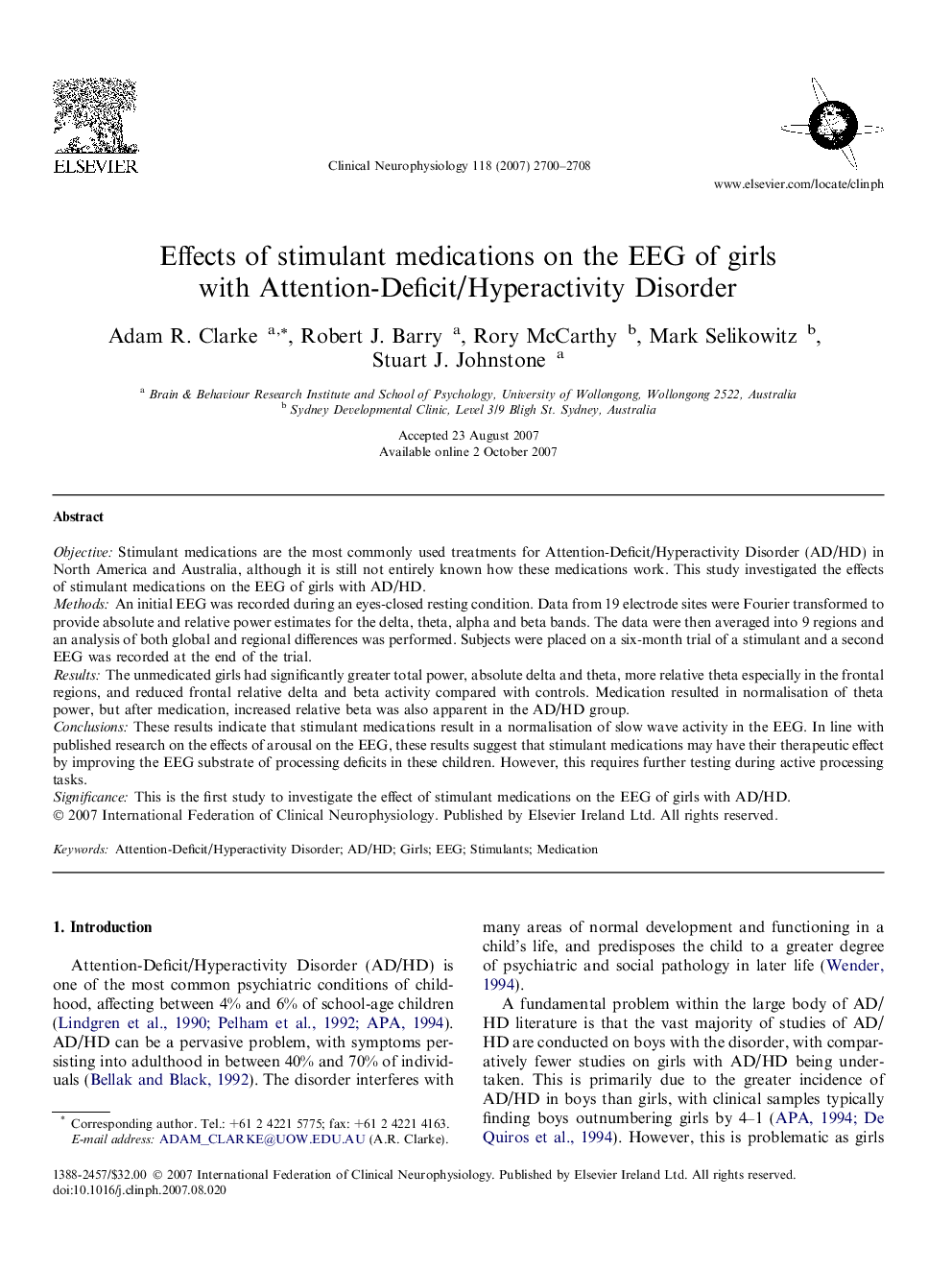| Article ID | Journal | Published Year | Pages | File Type |
|---|---|---|---|---|
| 3047231 | Clinical Neurophysiology | 2007 | 9 Pages |
ObjectiveStimulant medications are the most commonly used treatments for Attention-Deficit/Hyperactivity Disorder (AD/HD) in North America and Australia, although it is still not entirely known how these medications work. This study investigated the effects of stimulant medications on the EEG of girls with AD/HD.MethodsAn initial EEG was recorded during an eyes-closed resting condition. Data from 19 electrode sites were Fourier transformed to provide absolute and relative power estimates for the delta, theta, alpha and beta bands. The data were then averaged into 9 regions and an analysis of both global and regional differences was performed. Subjects were placed on a six-month trial of a stimulant and a second EEG was recorded at the end of the trial.ResultsThe unmedicated girls had significantly greater total power, absolute delta and theta, more relative theta especially in the frontal regions, and reduced frontal relative delta and beta activity compared with controls. Medication resulted in normalisation of theta power, but after medication, increased relative beta was also apparent in the AD/HD group.ConclusionsThese results indicate that stimulant medications result in a normalisation of slow wave activity in the EEG. In line with published research on the effects of arousal on the EEG, these results suggest that stimulant medications may have their therapeutic effect by improving the EEG substrate of processing deficits in these children. However, this requires further testing during active processing tasks.SignificanceThis is the first study to investigate the effect of stimulant medications on the EEG of girls with AD/HD.
